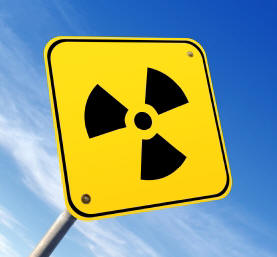 “Invisible. Odorless. Deadly.” While an accurate description of carbon monoxide, this is also an accurate description of radon. Frightening as that descriptor is, when you add “Found Everywhere” to that listing, you start to get a more grim picture of radon’s deadly potential.
“Invisible. Odorless. Deadly.” While an accurate description of carbon monoxide, this is also an accurate description of radon. Frightening as that descriptor is, when you add “Found Everywhere” to that listing, you start to get a more grim picture of radon’s deadly potential.
Radon, a radioactive gas that results from the breakdown of uranium in soil and rocks, is, truly, just about everywhere. As it releases into the open air and dissipates, it’s not much of a concern. But if your home/office sits atop a concentration of radon, your basement can essentially trap it in inside your dwelling. THEN we’re talking some problems.
The Facts about Radon
It goes without saying that radon can seriously undermine your long-term health. The Environmental Protection Agency (EPA) lists radon as the second-most leading cause of lung cancer. And if you’re a smoker, you face even more health risk. (Oddly enough, smoking itself is the number one cause of lung cancer.) Furthermore, the EPA estimates that about one out of 15 homes have elevated amounts of the gas. They suggest that all homes below the third floor level should be tested for radon.
Fortunately, detecting and measuring the amount of radon in your home is easy. Besides buying fairly affordable kits from a variety of hardware outlets and retailers, you can have your home professionally tested for the most accurate readings—not only in terms of how much, but from where. If your reading exceeds 4.0 pCi/L (average is 1.3), you have a radon issue.
OKAY…You Have Radon…Now What?
It’s time to have the radon THREAT removed; unless you move your home/business or the entire ground underneath, your only recourse is to remove existing “sitting” gas and seal your home so that more gas does not enter. And your safest method for accomplishing this is to call in a licensed professional. You can get your home tested for radon from the experts in Twin Falls, ID.
Their first step would be to install a vent pipe and fan system to draw the gas away from underneath the building. The next step would be to seal up all the cracks in the infrastructure of your home. Right away, further testing should indicate significantly lower levels of radon gas.
If the levels of radon are great enough, your specialist will probably use a pressurized system to block the radon from entering your house with a radon mitigation fan to help force remaining gas out.
Possibly the simplest way of dealing with a radon threat is to utilize a sump pump. This can be an expensive option, as a pump that conforms to your particular situation would have to be specially constructed.
Make sure your specialist also enlists long-term testing to ensure that all the work will hold up as long as you (or anybody else) are in the home.
What Will It Cost To Get Rid of Radon?
The final tally depends on what options you choose and the factors surrounding your particular radon situation. But the expense is worth eradicating the radon risk.
Need someone to help make sure your company gets rid of Radon Emissions? We deal with these issues every day. Contact Us (859-689-9222) to get more information about how we can help your business.
